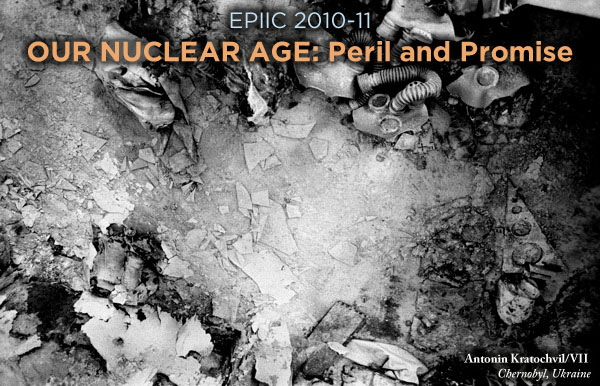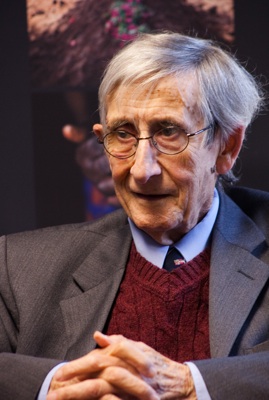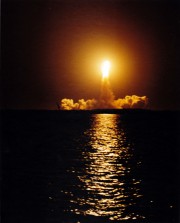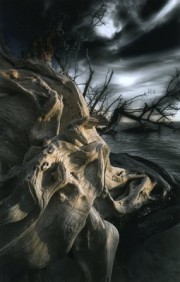- About this Program
- 2012 Conflict in the 21st Century
- 2011 Our Nuclear Age: Peril and Promise
- Syllabus
- Lecturers and Advisers
- Lecturers and Advisors
- Texts
- Colloquium Members
- Research
- The MX Missile Awareness Project
- EPIIC Weekend Immersion
- Inquiry
- Special Opportunities
- 2010 South Asia: Conflict, Culture Complexity, and Change
- 2009 Cities: Forging an Urban Future
- 2008 Global Poverty and Inequality
- 2007 Global Crises: Governance and Intervention
- 2006 The Politics of Fear
- 2005 Oil and Water
- 2004 Dilemmas of Empire and Nation Building
- 2003 Sovereignty and Intervention
- 2002 Global Inequities
- 2001 Race and Ethniciity: A Global Inquiry
- 2000 Global Games: Sports, Politics, and Society
- Symposium
- 1999 Global Crime, Corruption, and Accountability
- 1998 Exodus and Exile: Refugees, Migration, and Global Security
- 1997 The Future of Democracy
- 1996 Religion, Politics, and Society
- 1995 20/20 Visions of the Future
- 1994 Ethnicity, Religion and Nationalism
- 1993 Transformations in the Global Economy
- 1992 - International Security: The Environmental Dimension
- 1991 Confronting Political and Social Evil
- 1990 The Militarization of the Third World
- 1989 Drugs, International Security and U.S. Public Policy
- 1988 Foreign Policy Imperatives for the Next Presidency
- 1988 Covert Action and Democracy
- 1987 The West Bank and Gaza Strip
- 1986 International Terrorism
- News
- Press Clips
- Calendar
- Resources
EPIIC Archives
2011 Our Nuclear Age: Peril and Promise

Fall and Spring 2010: Tuesdays, Thursdays 3:00-5:30pm
EXP 91F
Tuesdays and Thursdays, 3:00-5:30pm
Bi-monthly Discussion Sessions TBA
| EPIIC is open to undergraduate and graduate students of all majors • EPIIC coursework can count toward credit in many majors • Full Credit/Letter Graded |

I have felt it myself, the glitter of nuclear weapons. It is irresistible if you come to them as a scientist. To feel it’s there in your hands, to release this energy that fuels the stars, to let it do your bidding. To perform these miracles, to lift a million tons of rock into the sky. It is something that gives people an illusion of illimitable power, and it is, in some ways, responsible for all our trouble--this, what you might call technical arrogance, that overcomes people when they see what they can do with their minds.
--Freeman Dyson,
theoretical physicist and mathematician
--Freeman Dyson,
theoretical physicist and mathematician


 Against the backdrop of the arc of nuclear history from the race for the atomic bomb and the secrecy and espionage of the Manhattan Project to President Obama’s 2010 U.S. Nuclear Posture Review and Nuclear Security Summit, this year’s EPIIC colloquium will explore our global nuclear future.
Against the backdrop of the arc of nuclear history from the race for the atomic bomb and the secrecy and espionage of the Manhattan Project to President Obama’s 2010 U.S. Nuclear Posture Review and Nuclear Security Summit, this year’s EPIIC colloquium will explore our global nuclear future.
Nine countries currently control 23,000 nuclear weapons. During the Cold War, the superpowers amassed nuclear arsenals containing the explosive power of one million Hiroshimas. More than two decades after the fall of the Berlin Wall, the U.S. and Russia still have a combined total of more than 20,000 nuclear weapons. One Hiroshima-size weapon alone, detonated in London’s Trafalgar Square in the middle of a workday would cause an estimated 115,000 fatalities and 149,000 injuries. A regional nuclear war between India and Pakistan could lead to 20 million local fatalities and more than one billion global fatalities from the direct impact on the world’s atmosphere and agricultural supply.
The class will look at the history of failed and successful arms control regimes, the threat posed by both declining and rising nuclear states, the dilemma of science in the service of military objectives, resource wars in Africa and elsewhere to control and exploit uranium, Israel’s Osirak raid and concerns over temptations of preemptive strikes and preventive war, the proclaimed “nuclear renaissance” and the building of new nuclear energy plants, the relevance and ethics of deterrence thinking, and the political, diplomatic, civil and military complexities of proliferation case studies, including Pakistan, South Africa, Libya, Iran, and North Korea. How realistic is the threat of a terrorist suitcase bomb? Is nuclear terrorism the most pressing, dangerous and neglected feature of the world’s nuclear predicament?
Working with experts, we will consider the implications of Iran achieving nuclear capacity “breakout”, the U.S. decision to abandon the European theater missile shield, the concerns over China’s Taibai Mountain and the US’s Yucca Mountain, the security status of tactical nuclear weapons, the vulnerability of nuclear reactor laboratories, the diffusion of nuclear knowledge and technology through the Khan network, whether nuclear energy and non-proliferation can co-exist, and the US military’s nuclear survivability.
 We will explore the psychology of nuclear proliferation, the effectiveness of citizen action movements such as the Nuclear Freeze Movement and the Global Zero initiative, how nuclear terror and catastrophe are rendered in popular culture, and if a nuclear-free world is actually attainable and desirable.
We will explore the psychology of nuclear proliferation, the effectiveness of citizen action movements such as the Nuclear Freeze Movement and the Global Zero initiative, how nuclear terror and catastrophe are rendered in popular culture, and if a nuclear-free world is actually attainable and desirable.
Are the experts and editors of the Bulletin of Atomic Scientists justified in moving back the minute hand on the “Doomsday” clock?
Among others, we will be working with the scientists and nuclear experts and policy makers of the Blue Ribbon Commission on America’s Nuclear Future, the Nuclear Regulatory Agency, International Pugwash, the Federation of American Scientists, the Union of Concerned Scientists, International Physicians for the Prevention of Nuclear War, the Ploughshares Foundation, the National Security Archive, the World Security Institute, as well as political scientists, diplomats, and investigative journalists.

